Samar Island, located in the Visayas region of the Philippines, is a paradise for bird enthusiasts. Its diverse landscape, ranging from dense forests to coastal areas, provides a habitat for over 200 bird species, some of which are endemic to the island.
The island is also a stopover for migratory birds traveling from Siberia to Australia during the winter months.
The avifauna in Samar Island includes various birds of prey, woodpeckers, kingfishers, hornbills, the Philippine Hanging Parrot, and the Visayan Tarictic Hornbill, which is critically endangered.
The island’s rich biodiversity and its significance as a birding destination make it a must-visit place for nature lovers and birdwatchers.
1. Spotted Dove
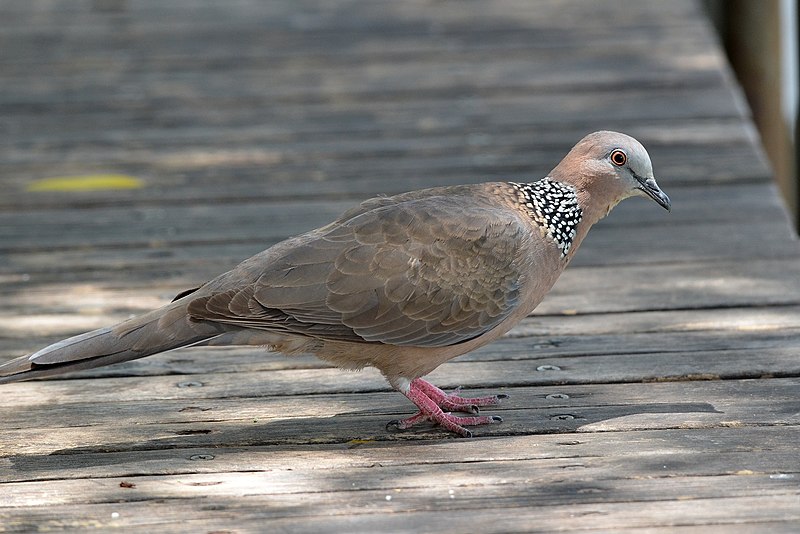
The Spotted Dove is a common species of pigeon found in the Indian subcontinent and Southeast Asia. It has an elegant, slender body with small head, long tail feathers and spotted wings.
Its coloring ranges from grey to brownish-grey on its upperparts with white underparts that are speckled black or dark grey. The male generally has more prominent spots than the female.
They feed mainly on seeds but will also consume insects when available during breeding season as well as berries, grains and fruits throughout their range.
These birds typically live in pairs or small groups near water sources such as ponds, rivers or streams where they can find food easily while staying safe from predators like cats and hawks.Scientific classification:
| Kingdom | Animalia |
| Phylum | Chordata |
| Class | Aves |
| Order | Columbiformes |
| Family | Columbidae |
| Genus | Spilopelia |
| Species | S. chinensis |
Also Featured In: Common Birds in India, Hawaii Big Island Birds You Should Know
2. White-Breasted Waterhen
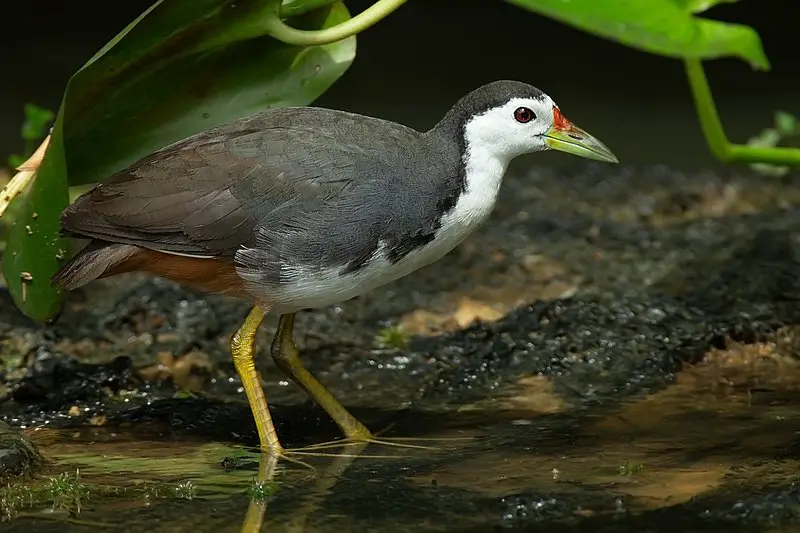
The White-breasted Waterhen is a stunning species of bird from South and Southeast Asia. It has a striking appearance, with its dark slaty plumage contrasted by the clean white of its face, breast and belly.
This bold waterbird can often be seen slowly walking around marshes or even drains near busy roads with its tail held upright in an unmistakable pose.
They are omnivores which feed on both plants and small animals such as insects and invertebrates.
The White-breasted Waterhen plays an important role in their ecosystems as they help to keep it balanced by consuming pests that could potentially cause damage to crops or other plant life if left unchecked.Scientific classification:
| Kingdom | Animalia |
| Phylum | Chordata |
| Class | Aves |
| Order | Gruiformes |
| Family | Rallidae |
| Genus | Amaurornis |
| Species | A. phoenicurus |
Also Featured In: Most Common Types of Bangladeshi Birds, Hong Kong Birds You Need to See
3. Pink-Necked Green Pigeon
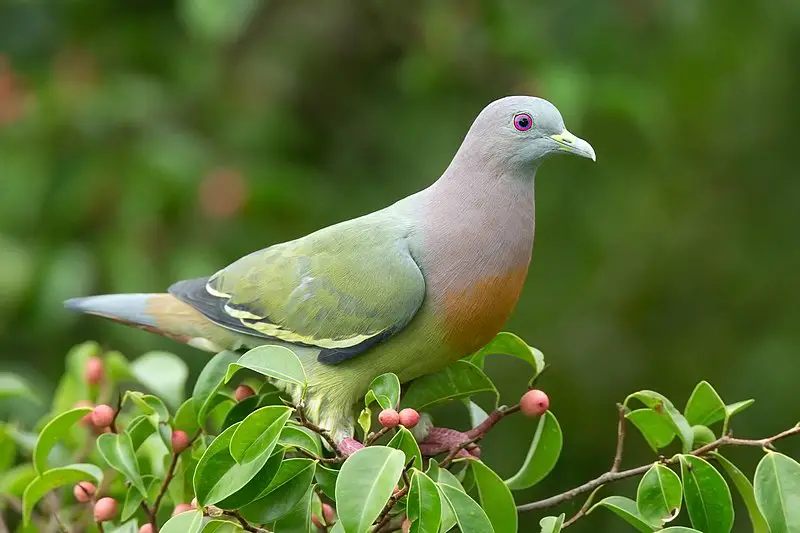
The Pink-necked green pigeon is a beautiful bird of the Columbidae family, native to Southeast Asia. Its body is mainly covered with emerald feathers and only the male has an eye-catching pink neck.
It can be found from Myanmar and Vietnam down to Indonesia and even in parts of Philippines, where it’s known as “punay”.
This medium sized species loves feeding on fruits such as figs or guavas but also enjoys snacking on insects from time to time.
In its natural habitat, this colorful avian often nests high up in trees for better protection against predators.
All in all, the unique beauty of Pink-necked Green Pigeon makes it one truly remarkable bird.Scientific classification:
| Kingdom | Animalia |
| Phylum | Chordata |
| Class | Aves |
| Order | Columbiformes |
| Family | Columbidae |
| Genus | Treron |
| Species | T. vernans |
Also Featured In: Birds of the Philippines, Most Common Birds of Ko Samui
4. Greater Painted-Snipe
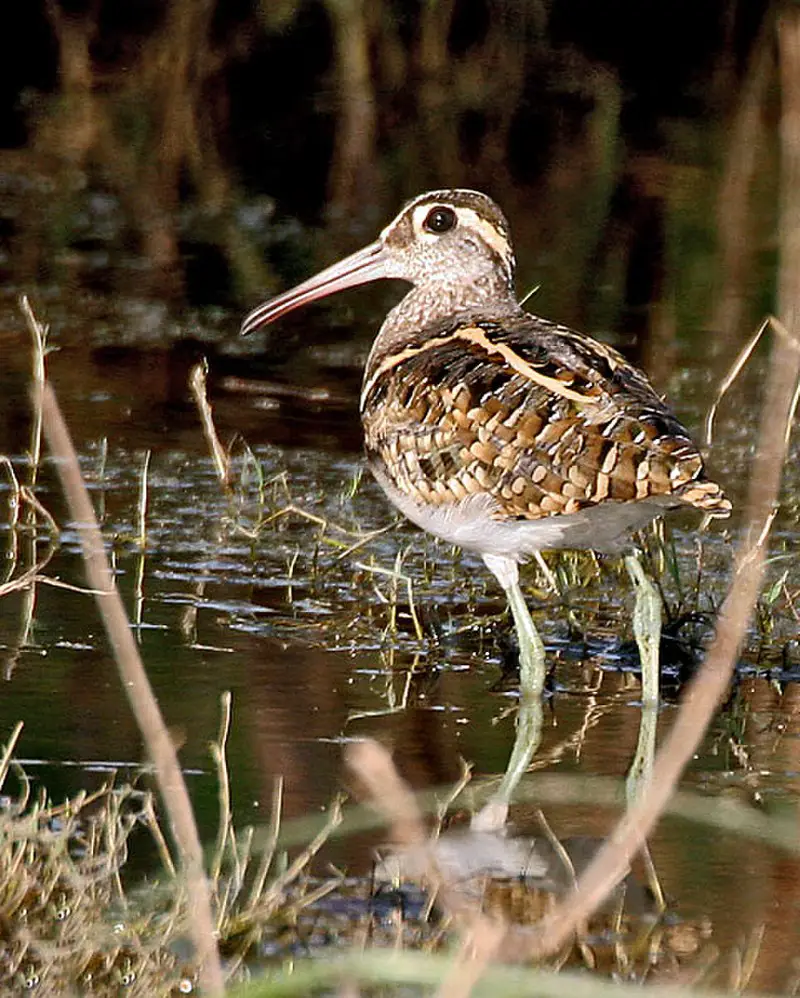
The Greater Painted-snipe is a medium-sized, plump wading bird found in marshes throughout Africa, South Asia and Southeast Asia.
It has distinctive features that make it stand out from its peers: a long reddish brown bill slightly curved at the tip with an eye patch of white or pinkish coloration; rounded wings speckled with buff spots; and a short tail.
The breast of this species has extensive white plumage which extends up around the top of its folded wing.
With its unique appearance, this avian beauty stands out among other birds in wetland habitats.Scientific classification:
| Kingdom | Animalia |
| Phylum | Chordata |
| Class | Aves |
| Order | Charadriiformes |
| Family | Rostratulidae |
| Genus | Rostratula |
| Species | R. benghalensis |
Also Featured In: Native South Korean Birds, Birds that Live in lake Mburo National Park
5. Common Emerald Dove
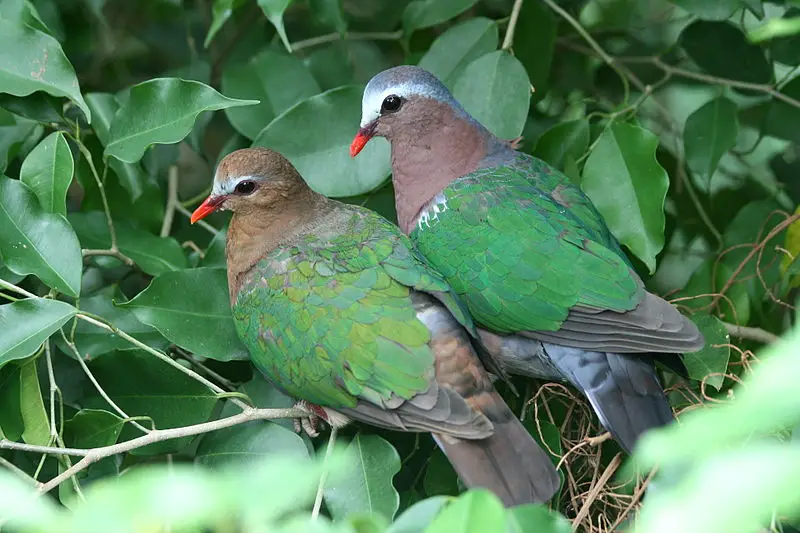
The Common Emerald Dove is a beautiful bird that can be found in tropical and subtropical parts of the Indian Subcontinent and Southeast Asia.
Its distinctive features include its grey-capped head, while its wings are an emerald green colour.
It has also earned itself the nickname “green dove” or “green-winged pigeon”. This species plays an important role in Tamil Nadu’s ecology, which makes it fitting for them to have named it their state bird.
The Pacifric Emerald Dove is closely related to this species but they differ slightly in appearance and habitat preferences; however both make great pets due to being gentle by nature.Scientific classification:
| Kingdom | Animalia |
| Phylum | Chordata |
| Class | Aves |
| Order | Columbiformes |
| Family | Columbidae |
| Genus | Chalcophaps |
| Species | C. indica |
Also Featured In: Birds in Sri Lanka, Birds that Charles Darwin Studied
6. Black-Crowned Night Heron
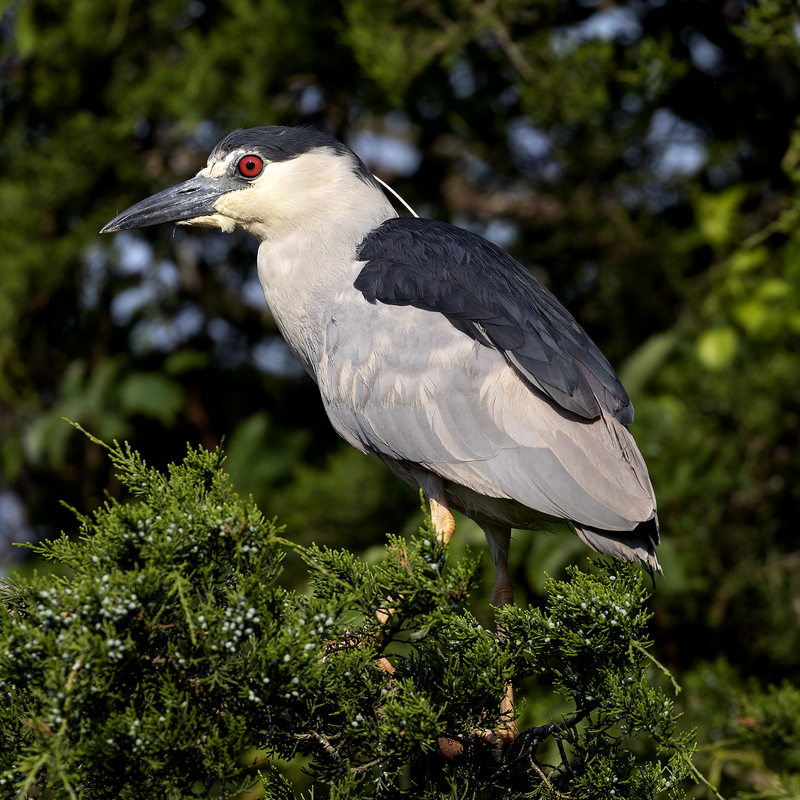
The Black-crowned night heron (Nycticorax nycticorax) is a medium-sized bird found in various parts of the world, including Europe, Asia and North and South America.
It has black crowns on its head with white feathers underneath. Its wings are greyish brown while its underparts are mostly white.
This species can be seen foraging near shallow water or along coastlines during dusk or dawn as it hunts small fish, amphibians and crustaceans.
They also feed on insects such as grasshoppers and beetles which they find in meadows close to freshwater bodies like lakes or ponds where they breed during springtime making nests using twigs lined with reeds and leaves near these waterside habitats.
In Australasia, this species hybridizes with the nankeen night heron that inhabits those areas instead; however both populations remain distinct from each other despite their overlap range regions.Scientific classification:
| Kingdom | Animalia |
| Phylum | Chordata |
| Class | Aves |
| Order | Pelecaniformes |
| Family | Ardeidae |
| Genus | Nycticorax |
| Species | N. nycticorax |
Also Featured In: Common Birds Found in Switzerland, Birds of Kauai, Hawaii
7. King Quail
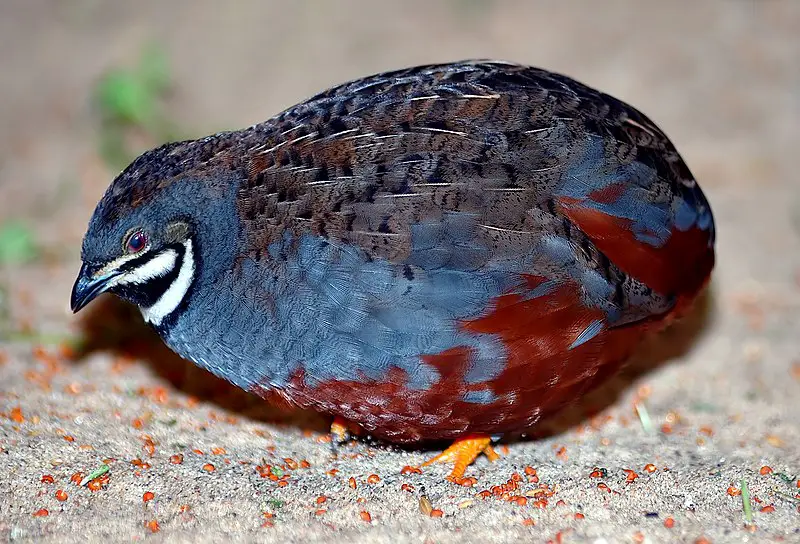
The King Quail is a species of Old World quail found in Southern China, South and Southeastern Asia to Oceania. It’s the smallest “true quail” measuring only about 17 cm long.
They have grey-brown feathers on their back and wings with black barring over white underparts that can be seen from above.
The head has blue cheeks, a bright red forehead patch, and tufts of brownish-black feathers along the top while its throat is bordered by buffy yellow stripes down each side.
In addition males are also easily identified by their striking bluish plumage around the neck which gives them their common name ‘the Blue Breasted Quail’.
Despite an attempt to introduce this bird into North America they remain confined mostly to Australia where they inhabit grasslands, wooded areas near watercourses or swamps as well as open forest habitats but rarely exceed 100 meters altitude in rangeScientific classification:
| Kingdom | Animalia |
| Phylum | Chordata |
| Class | Aves |
| Order | Galliformes |
| Family | Phasianidae |
| Genus | Synoicus |
| Species | S. chinensis |
Also Featured In: Singapore Birds, Aviary Birds You Should Know
8. Eurasian Whimbrel
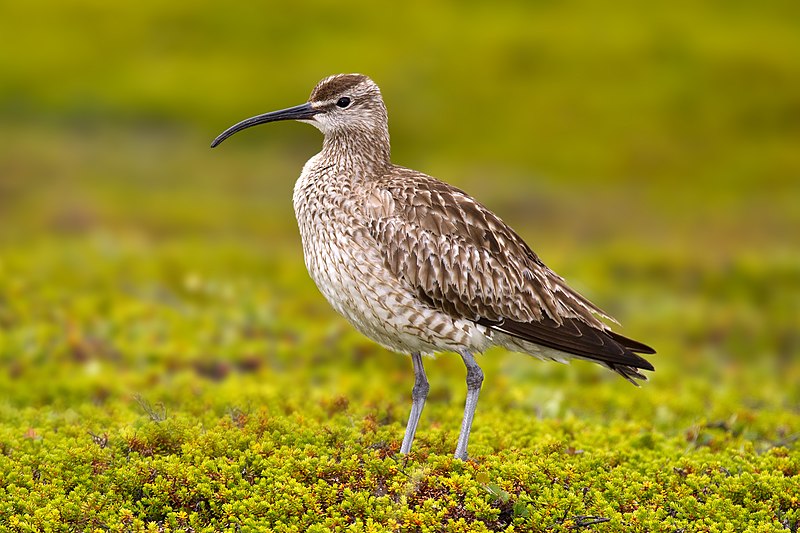
Eurasian Whimbrels are a species of wading bird commonly found in subarctic regions of Europe and Asia.
They have white rumps, long curved bills, brown wings and backs with light streaking on the lower breast.
These birds feed mainly on crustaceans, mollusks or worms they find while probing in the mud during low tide.
During breeding season they can be seen nesting near coastal areas or wetlands where food is plentiful.
This species has recently been split from Hudsonian whimbrels but some authorities still consider them to be one species due to their similarities which includes migration patterns as well as habitat preferences.
Eurasian whimbrels are an important part of many ecosystems because they help control insect populations by eating larvae before it can cause damage to crops or vegetation nearby.Scientific classification:
| Kingdom | Animalia |
| Phylum | Chordata |
| Class | Aves |
| Order | Charadriiformes |
| Family | Scolopacidae |
| Genus | Numenius |
| Species | N. phaeopus |
Also Featured In: Galapagos Birds You Should Know, Birds that Live in San Francisco Bay Area
9. Metallic Pigeon
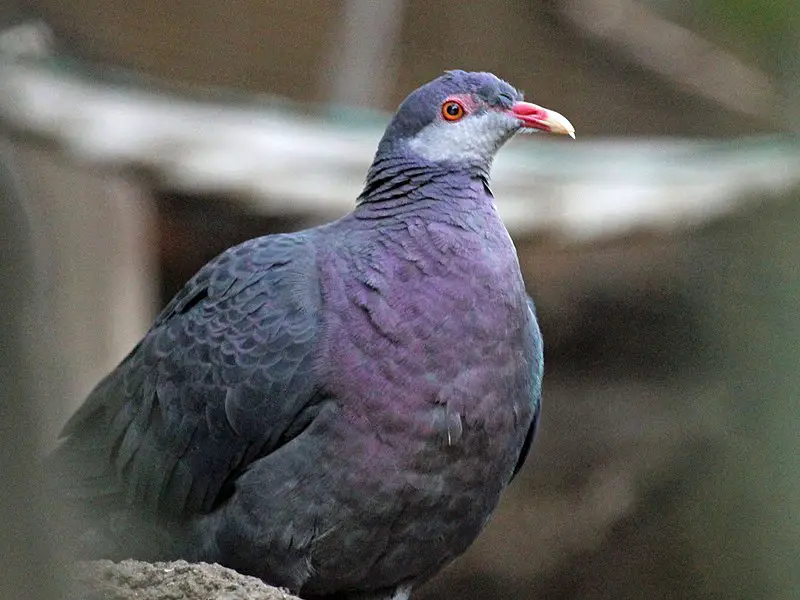
The Metallic Pigeon, or white-throated pigeon, is a medium-sized bird of the family Columbidae. Measuring up to 37 cm in length, it boasts an array of beautiful colors and features.
It has a dazzling iridescent purple and green crown, black wing and uppertail coverts with yellowish red eyes surrounded by red orbital skin around each eye.
Its beak is yellow while its chin and ears are covered with either grey or white feathers.
The underbelly shines brightly in chestnut or glossed purple shades for added beauty when flying about its natural habitat.
Lastly, this spectacular species sports purplish feet which act as perfect complements to their already colorful plumage.Scientific classification:
| Kingdom | Animalia |
| Phylum | Chordata |
| Class | Aves |
| Order | Columbiformes |
| Family | Columbidae |
| Genus | Columba |
| Species | C. vitiensis |
Also Featured In: Timor-Leste birds, Birds of New Caledonia
10. White-Browed Crake
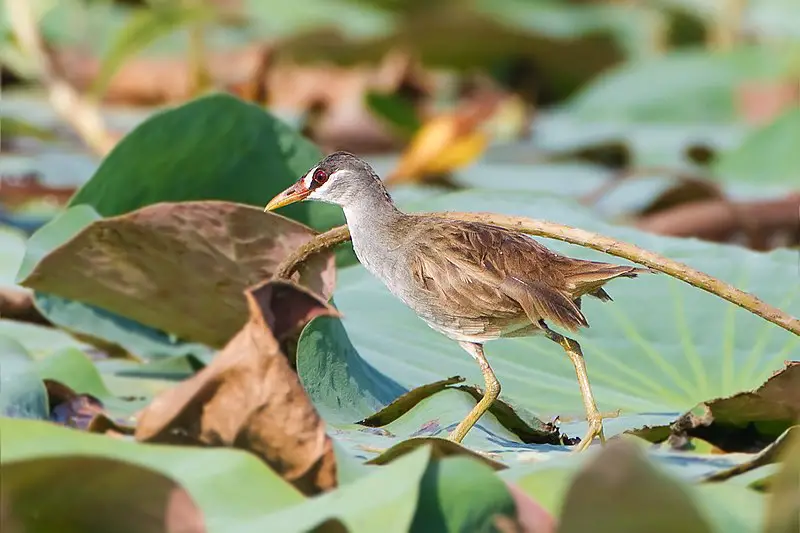
The White-browed Crake is an amazing bird found in many different parts of the world such as Australia, Brunei and even Japan.
It lives mostly in subtropical or tropical mangrove forests, where it can find plenty of food to survive on.
This species has a white head with brown eyes, combined with its slate grey back gives it a unique look that makes them stand out from other birds.
Its diet consists mainly of small invertebrates like insects and larvae but they also feed on fruits when available.
They are shy by nature so if you spot one be sure not to scare it away. Despite their rarity they have been known to breed successfully in captivity and thus have had some success at conservation efforts aimed at preserving this beautiful species.Scientific classification:
| Kingdom | Animalia |
| Phylum | Chordata |
| Class | Aves |
| Order | Gruiformes |
| Family | Rallidae |
| Genus | Poliolimnas Sharpe, 1893 |
| Species | P. cinereus |
11. Lesser Frigatebird
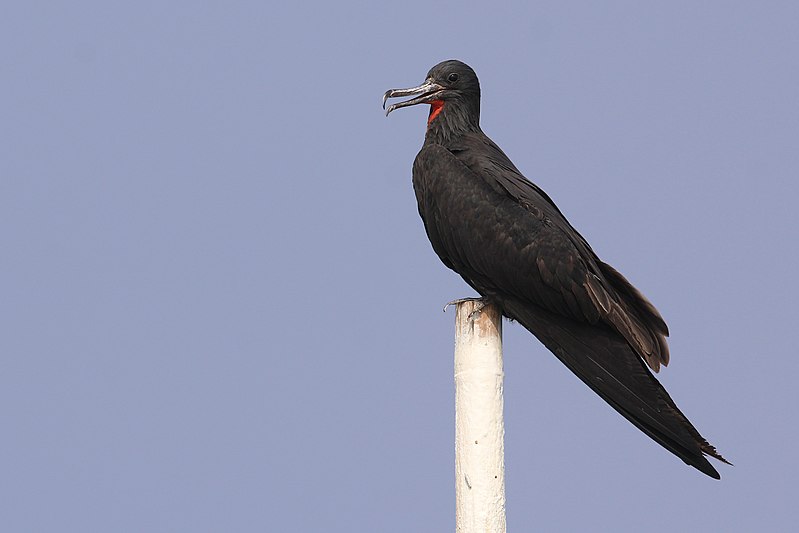
The Lesser Frigatebird is a seabird of the Fregatidae family and is known to be the smallest species in this group. It has brownish-black plumage, long narrow wings, and a forked tail.
This bird inhabits tropical and subtropical regions across the Indian Ocean, Pacific Ocean as well as off Brazil’s Atlantic Coast.
It feeds on fish taken from surface water or by plunge diving while flying low over shallow waters.
Its primary breeding grounds are located around islands with steep cliffs where it builds its nests out of twigs and grasses high up near ledges or crevices.
The lesser frigatebird can live for about 25 years due to their strong aerodynamic abilities which allow them to glide through air currents effortlessly thus conserving energy during flights that last days at a time.Scientific classification:
| Kingdom | Animalia |
| Phylum | Chordata |
| Class | Aves |
| Order | Suliformes |
| Family | Fregatidae |
| Genus | Fregata |
| Species | F. ariel |
Also Featured In: Mauritius birds, Birds that Live in the Ocean
12. Bulwer’s Petrel
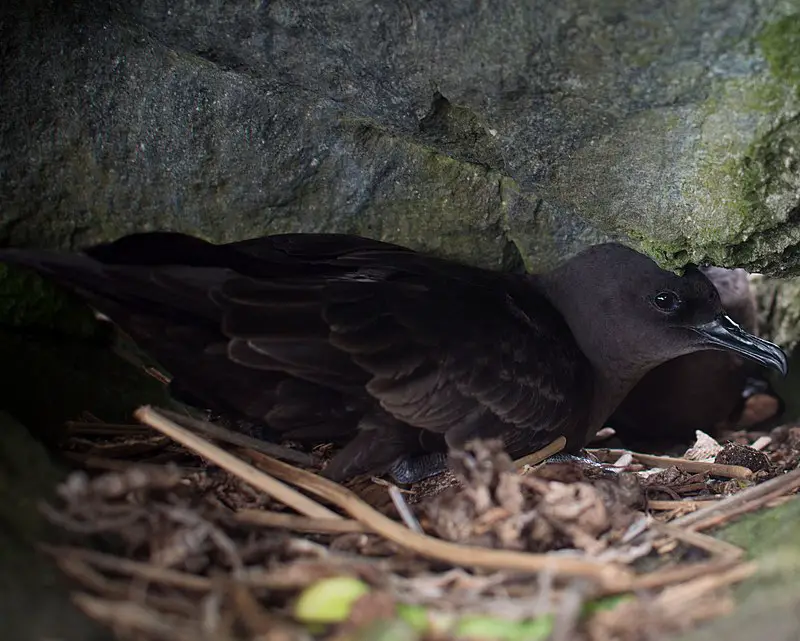
Bulwer’s petrel is a small seabird in the Procellariidae family which can be found across tropical and subtropical regions of the Atlantic, Indian and Pacific Oceans.
It was named after English naturalist James Bulwer who first described it in 1828 along with Jardine and Selby.
The bird has dark greyish plumage on its back while the underside is typically white or pale grey.
Its wings are short but broad making them ideal for soaring high above large bodies of water looking for food such as squid, fish, crustaceans and insects.
They use their long pointed bill to catch prey from both surface-skimming dives or underwater plunges up to 15 meters deep.
These birds nest burrows dug into soil cliffs where they lay just one egg each year which takes about 55 days to hatch.Scientific classification:
| Kingdom | Animalia |
| Phylum | Chordata |
| Class | Aves |
| Order | Procellariiformes |
| Family | Procellariidae |
| Genus | Bulweria |
| Species | B. bulwerii |
Also Featured In: Cabo Verde birds, Urban Birds of Hong Kong
13. Streaked Shearwater
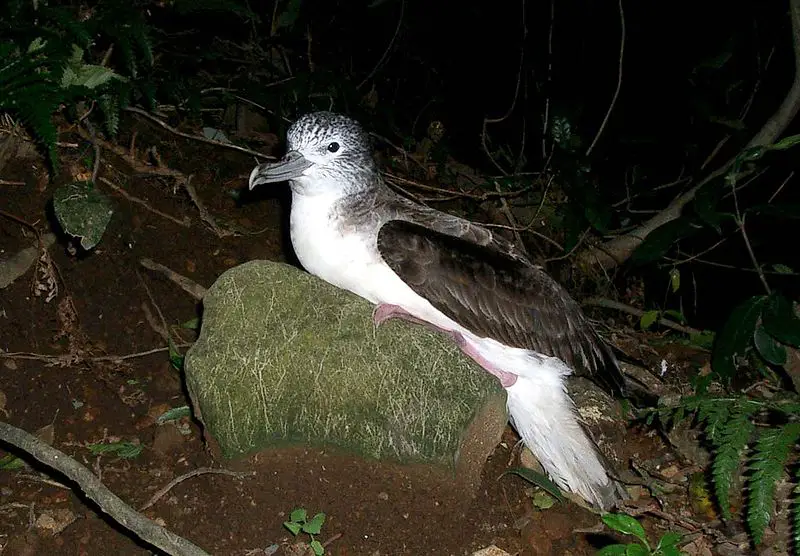
The Streaked Shearwater is a species of seabird that averages 48 cm in length and has a wingspan of 122 cm. It primarily feeds on fish, squid, and anchovy crawls off Japan.
Sadly it can often be taken as by-catch in nets or die from ingesting bait from longline fishing lines. This bird may also follow fishing boats to scavenge for food scraps thrown overboard.
Despite its vulnerability to human activity, the Streaked Shearwater’s population numbers have remained stable due to its wide range across many oceanic regions such as the North Pacific Ocean and South China Sea.Scientific classification:
| Kingdom | Animalia |
| Phylum | Chordata |
| Class | Aves |
| Order | Procellariiformes |
| Family | Procellariidae |
| Genus | Calonectris |
| Species | C. leucomelas |
Also Featured In: Palau birds, Birds that Can Survive in the Storm
14. Great Frigatebird
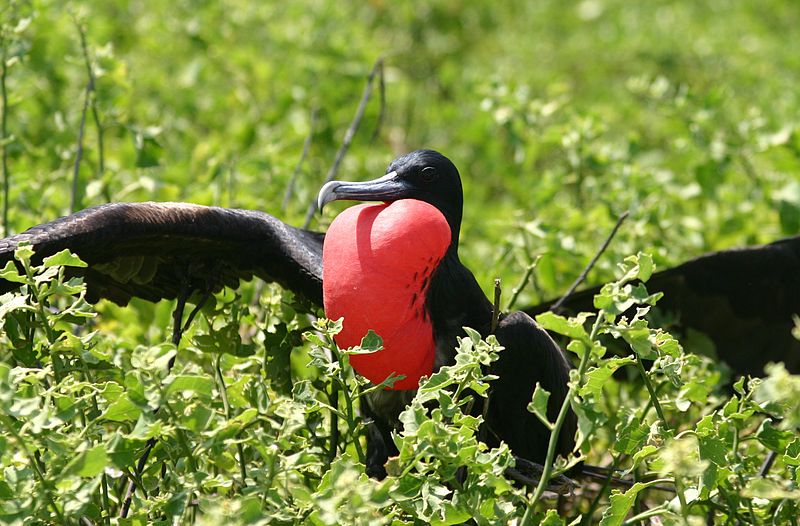
The Great Frigatebird is a large seabird found in tropical regions of the Pacific and Indian Oceans, as well as the South Atlantic.
It can grow up to 105 cm long with black plumage, making it one of the largest frigatebirds around.
The species also exhibits sexual dimorphism; males have bright red throat pouches while females have white or grey ones instead.
These birds nest in colonies on islands or near coastal areas where they feed off fish schools, squid and other marine life that they snatch from their dive-bombing prey.
They are highly adept at soaring for hours above oceanic waters searching for food sources below them before dives down into shallow water to catch unsuspecting meals.Scientific classification:
| Kingdom | Animalia |
| Phylum | Chordata |
| Class | Aves |
| Order | Suliformes |
| Family | Fregatidae |
| Genus | Fregata |
| Species | F. minor |
Also Featured In: Christmas Island Birds, Most Common Oahu Birds
15. Japanese Night Heron
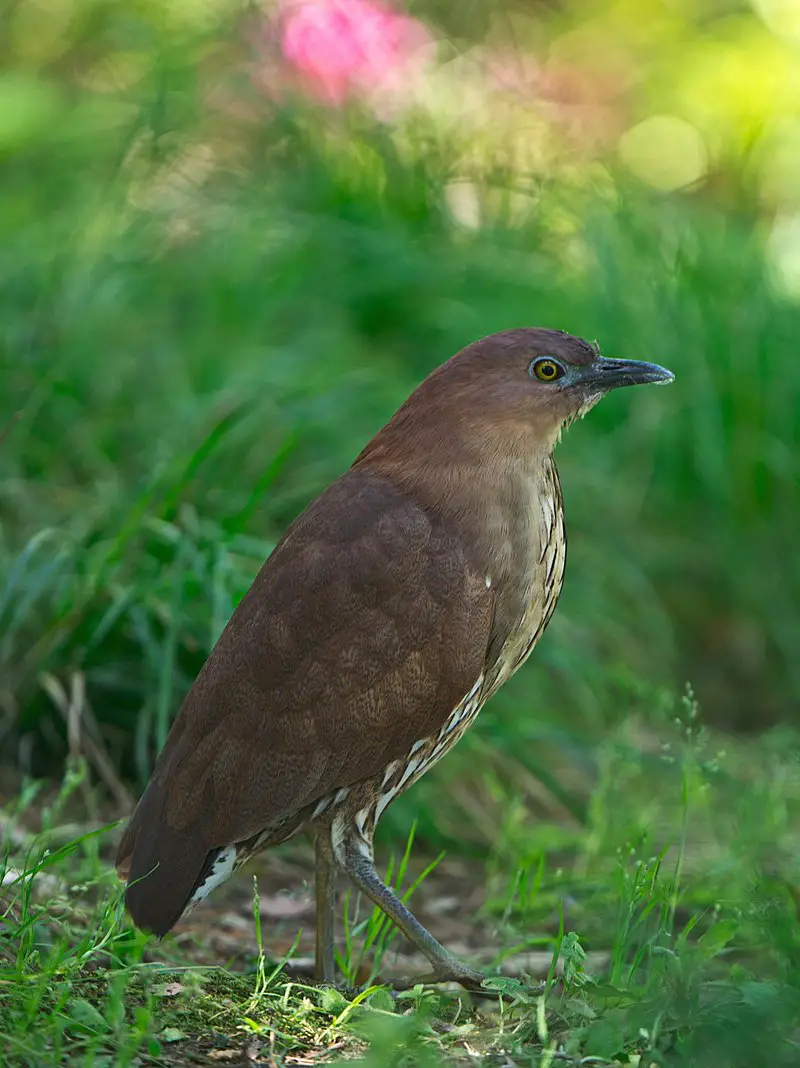
The Japanese night heron is a species of night heron that can be found in East Asia. It breeds mainly in Japan, and migrates to the Philippines and Indonesia during winter season.
During spring and summer, they are also seen in Korea or Russian Far East. This bird prefers dense forests with high humidity as its habitat for both breeding grounds and wintering sites.
Unfortunately, their population has been declining since 1970s due to deforestation activities which have destroyed their preferred habitats significantly.
Conservation efforts must be taken soon before this species becomes extinct from our planet earth.Scientific classification:
| Kingdom | Animalia |
| Phylum | Chordata |
| Class | Aves |
| Order | Pelecaniformes |
| Family | Ardeidae |
| Genus | Gorsachius |
| Species | G. goisagi |
Also Featured In: Herons Species, Most Common Birds of Lubang Island
16. Pygmy Swiftlet
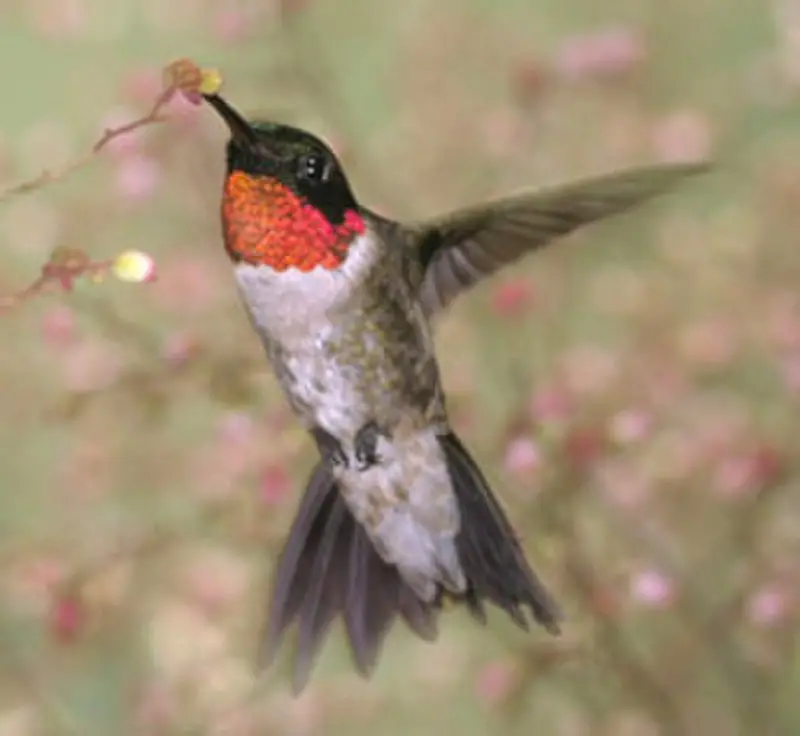
The Pygmy Swiftlet is a species of swift found only in the Philippines and boasts the title as being the world’s smallest swift at under 9 cm in length.
This tiny bird weighs an astounding 5 grams, but what makes it truly unique is its ability to use echolocation for navigation when nesting deep within dark caves.
It has adapted this skill due to its lack of light given off by other sources such as stars or moonlight.
The pygmy swiftlet survives on small insects that can be found within their natural habitat of subtropical or tropical moist lowland forests, making them an important part of local ecosystems.Scientific classification:
| Kingdom | Animalia |
| Phylum | Chordata |
| Class | Aves |
| Order | Apodiformes |
| Family | Apodidae |
| Genus | Collocalia |
| Species | C. troglodytes |
Also Featured In: Swifts Species, Birds That Live In Siquijor
17. Mindanao Bleeding-Heart
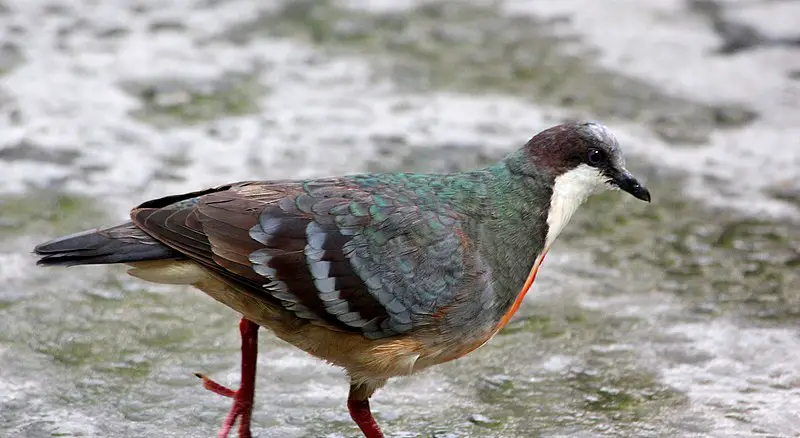
The Mindanao bleeding-heart bird is a pigeon species endemic to various Philippine islands, including Mindanao, Basilan, Samar, Leyte, and Bohol. Its distinguishing feature is a red blotch on its breast, which earned it its name.
This bird belongs to the pigeon family and is also known as Bartlett’s bleeding heart dove and the hair-breasted bleeding heart.
The generic name of the species reflects a fusion. The bird’s habitat and behavioral patterns are yet to be explored in greater detail.
The population of Mindanao bleeding-heart bird is threatened due to habitat loss and hunting. These birds are found in lowland forests, with most sightings occurring in primary and secondary forests.
There’s much to learn and discover about this species amidst the challenges they face in the wild.
Efforts are being made to protect and conserve their habitat and ensure their survival into the future.Scientific classification:
| Kingdom | Animalia |
| Phylum | Chordata |
| Class | Aves |
| Order | Columbiformes |
| Family | Columbidae |
| Genus | Gallicolumba |
| Species | G. crinigera |
Also Featured In: Common Philippines Birds, Mindanao Birds You Should Know
18. Whiskered Treeswift
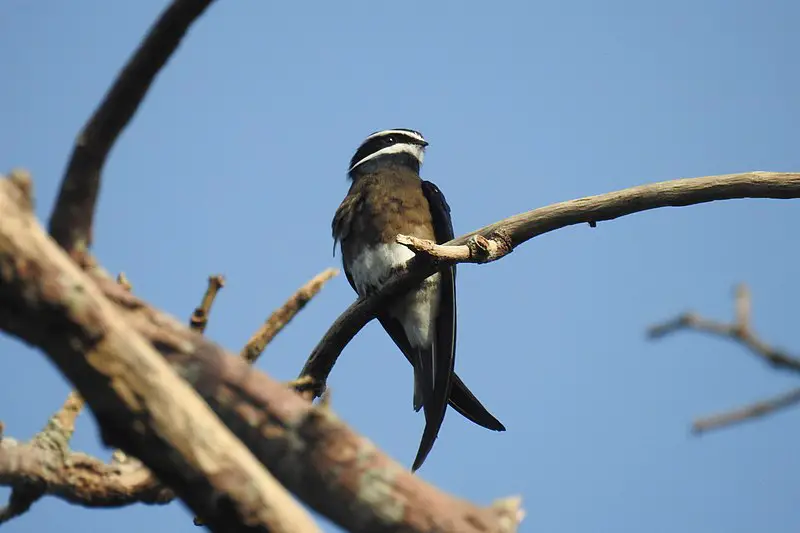
The Whiskered treeswift is a small bird belonging to the Hemiprocnidae family. It is one of the four species in the Hemiprocne genus, and it can be found in Brunei, Indonesia, Malaysia, Myanmar, the Philippines, Singapore, and Thailand.
This species inhabits subtropical or tropical moist lowland forest, mangrove forest, and moist montane forests.
The bird’s whiskers give it an interesting look, hence its name. Though small, the Whiskered treeswift is an adept aerial hunter, darting through the trees in search of insects.
Its small size also allows it to fly quickly and maneuver easily in tight spaces. This bird is considered to be of least concern when it comes to conservation status, as its population is thought to be stable.Scientific classification:
| Kingdom | Animalia |
| Phylum | Chordata |
| Class | Aves |
| Clade | Strisores |
| Order | Apodiformes |
| Family | Hemiprocnidae |
| Genus | Hemiprocne |
| Species | H. comata |
Also Featured In: Birds that Live in Borneo Island, Birds that Live in Kuala Lumpur
19. Pink-Bellied Imperial Pigeon
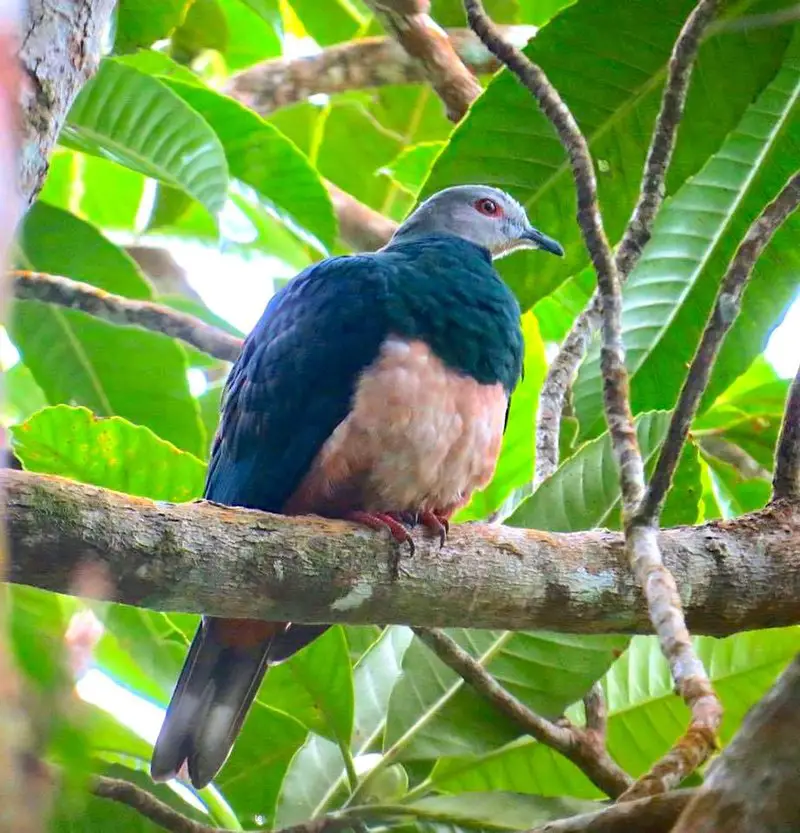
The Pink-bellied imperial pigeon, also called the zone-tailed pigeon, is a large bird found in the Philippines that can grow up to 42cm long. They are mostly dark green in color, with a gray head and a pink belly.
Their tail has a brown, black, and gray pattern, and their eyes and eye ceres are both red. The Pink-bellied imperial pigeon has a diet consisting mostly of fruit.
These birds are known for their stunning appearance and large size, making them an impressive sight in the wild.
They are a unique addition to the bird species of the Philippines, and their distinctive features make them stand out amongst other birds in the area.
Despite their size, Pink-bellied imperial pigeons are peaceful birds and pose no threat to humans or other animals.Scientific classification:
| Kingdom | Animalia |
| Phylum | Chordata |
| Class | Aves |
| Order | Columbiformes |
| Family | Columbidae |
| Genus | Ducula |
| Species | D. poliocephala |
Also Featured In: Most Common Birds in Negros, Mindoro Birds You Should Know
20. Philippine Spine-Tailed Swift
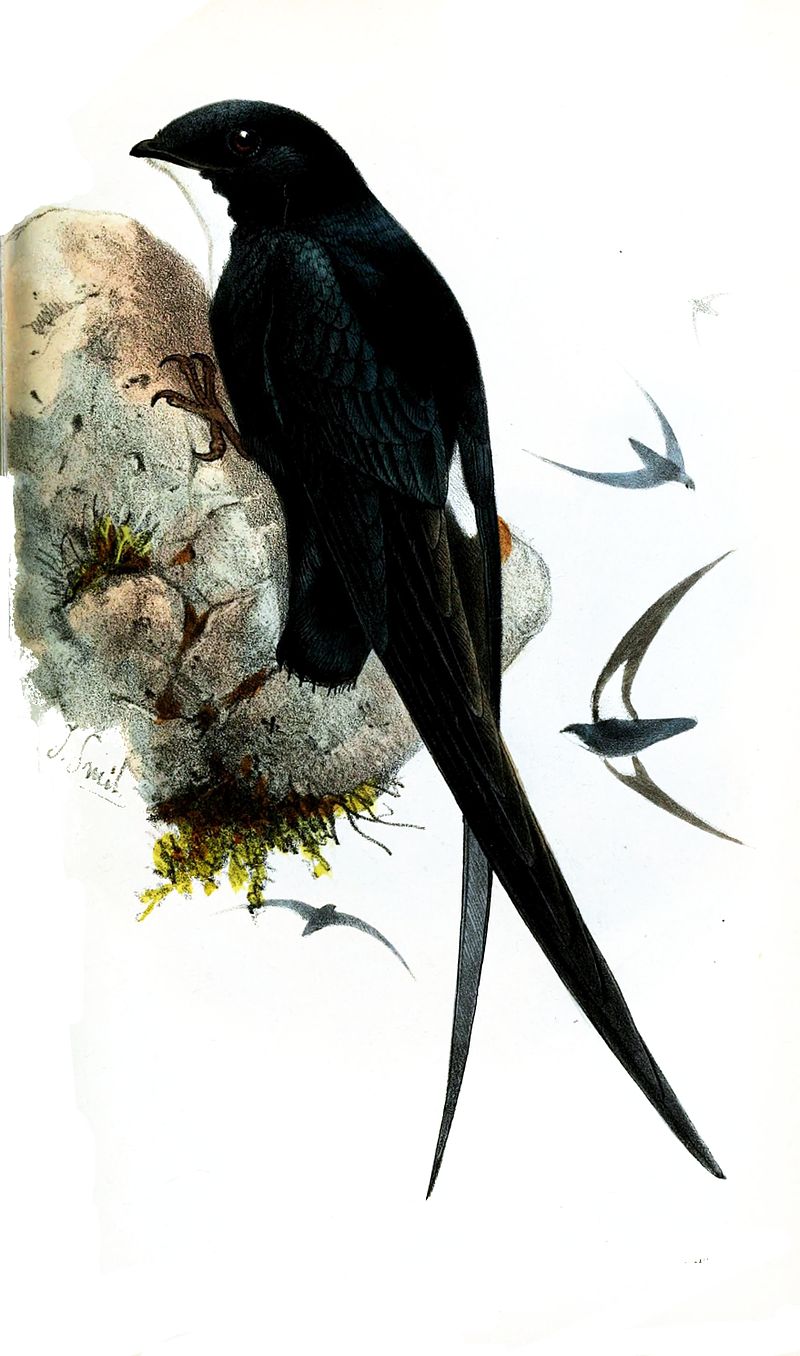
The Philippine spine-tailed swift is a swift species found only in the Philippines. This bird is known by several names, including the Philippine needletail and the Philippine spinetail.
It is a medium-sized bird that prefers to live in tropical moist lowland forests. Sadly, the species is slowly disappearing due to habitat loss.
Not much is known about this elusive bird, but it is important to preserve its natural habitat to ensure its survival.Scientific classification:
| Kingdom | Animalia |
| Phylum | Chordata |
| Class | Aves |
| Clade | Strisores |
| Order | Apodiformes |
| Family | Apodidae |
| Genus | Mearnsia |
| Species | M. picina |
21. Philippine Coucal
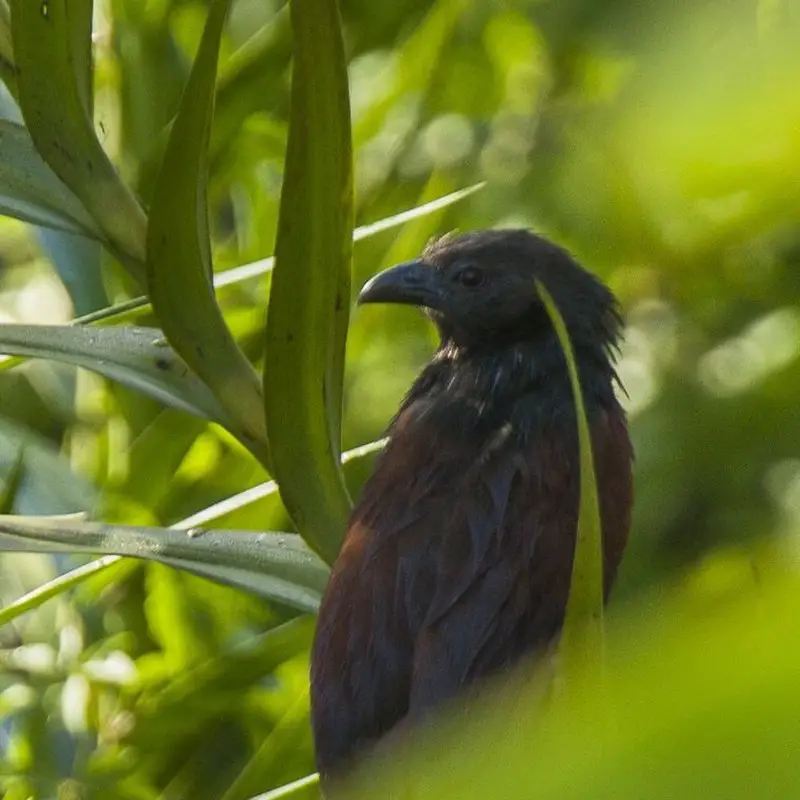
The Philippine coucal bird is a type of cuckoo found exclusively in the Philippines. This medium-sized bird has similar physical characteristics for both males and females, while different races of this species vary in color and size.
Some races, such as the carpenteri and mindorensis, appear completely black, while others like the viridis and majer display a black body with chestnut-colored wings. The carpenteri and majer variants are larger than viridis and mindorensis.
The viridis type possesses an overall black appearance, accented with a green sheen. As an endemic species, the Philippine coucal is only found in the Philippines, making it an important part of the country’s biodiversity.
Despite being a relatively lesser-known species compared to other birds, the Philippine coucal proves to be an interesting representative of avian life in the country.Scientific classification:
| Kingdom | Animalia |
| Phylum | Chordata |
| Class | Aves |
| Order | Cuculiformes |
| Family | Cuculidae |
| Genus | Centropus |
| Species | C. viridis |
Also Featured In: Most Common Catanduanes Birds,
22. White-Eared Brown Dove
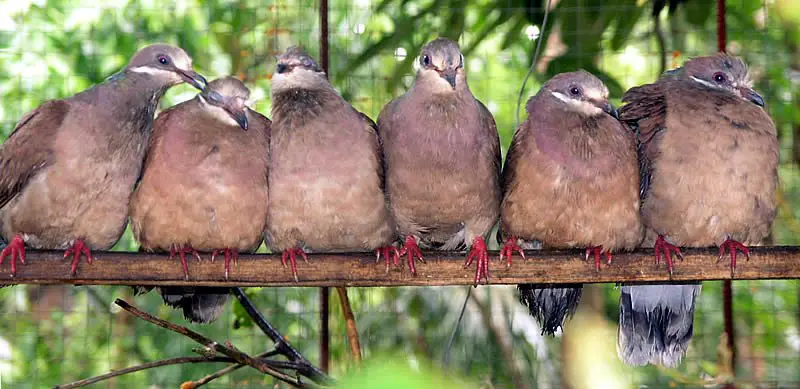
The White-eared brown dove is an exclusive bird in the Philippines belonging to the family Columbidae. It has a distinct sub-ocular line beginning from the gape to the nape in black with white marking from the back of the eye to the nape.
Usually, this bird is covered in brown feathers with a pale crown. This dove species is known for its unique characteristics, making it an interesting sighting for bird enthusiasts. While this bird is not endangered, habitat loss poses a threat to its population in the Philippines.
The White-eared brown dove is yet another breathtaking member of the Columbidae family, adding charm to the biodiversity of the Philippines.Scientific classification:
| Kingdom | Animalia |
| Phylum | Chordata |
| Class | Aves |
| Order | Columbiformes |
| Family | Columbidae |
| Genus | Phapitreron |
| Species | P. leucotis |
23. Amethyst Brown Dove

The Amethyst brown dove is a bird species from the Columbidae family. It can be found only in the Philippines, with a range that includes several islands such as Luzon, Polilio, Catanduanes, Samar, Bohol, and Mindanao.
Even though it is considered scarce in many areas, it inhabits both tropical moist lowland and montane forests. Although it can be found in lowlands, it is believed to have a preference for higher elevations.
Known for its unique coloring, the Amethyst brown dove boasts beautiful shades of brown and purple plumage.
As an endemic species, it plays an important role in the Philippines’ biodiversity and helps to maintain the health and balance of its natural habitats.Scientific classification:
| Kingdom | Animalia |
| Phylum | Chordata |
| Class | Aves |
| Order | Columbiformes |
| Family | Columbidae |
| Genus | Phapitreron |
| Species | P. amethystinus |
24. Philippine Frogmouth
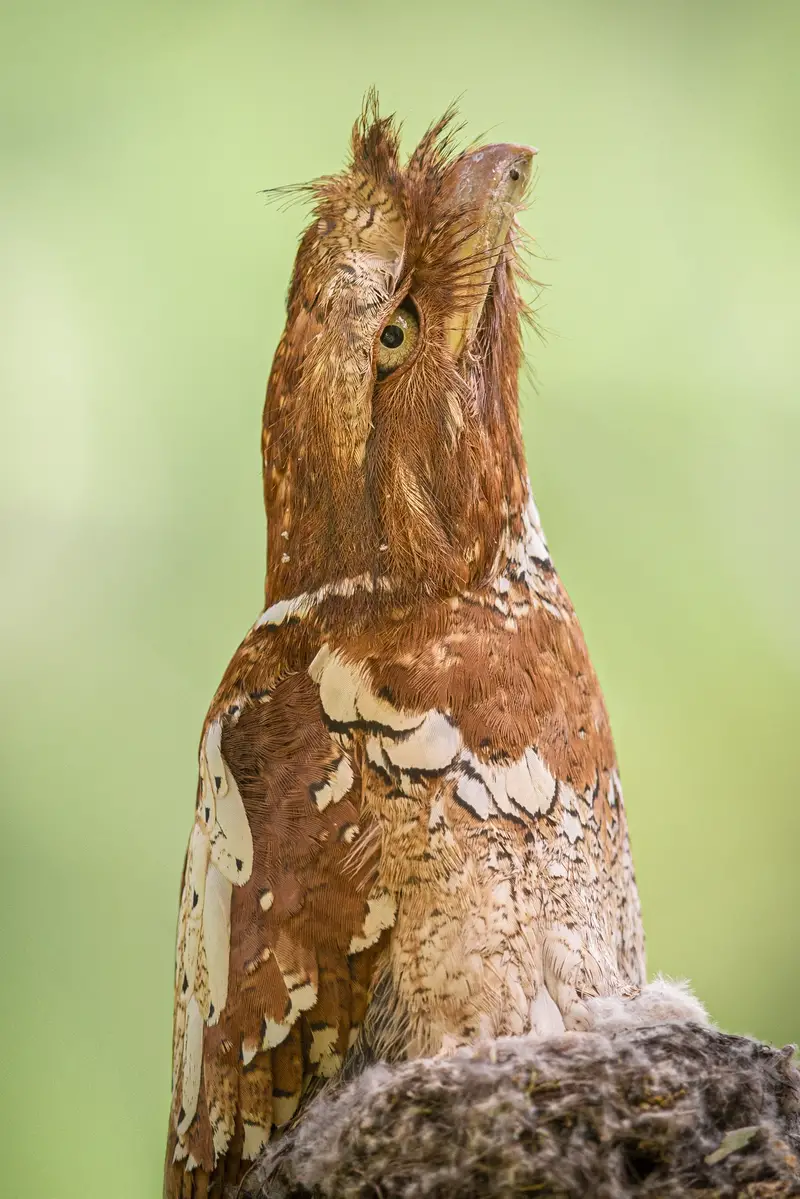
The Philippine frogmouth is a bird commonly seen in lowland forests and maturing second growth throughout the Philippine archipelago. It has a nocturnal habit and feeds on grasshoppers, cicadas, crickets, and beetles.
With large eyes for better night vision and a flat bill that helps to catch insects, the Philippine frogmouth is a unique species of frogmouth bird. Due to lack of information about this bird, it remains a mystery for many.Scientific classification:
| Kingdom | Animalia |
| Phylum | Chordata |
| Class | Aves |
| Clade | Strisores |
| Order | Podargiformes |
| Family | Podargidae |
| Genus | Batrachostomus |
| Species | B. septimus |